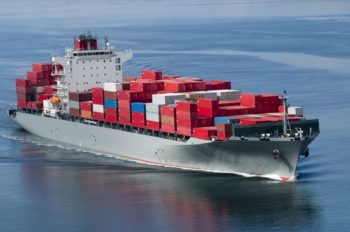
By Jite Eriabie
Despite ongoing freight rate erosion, container carriers are yet to announce any service suspensions for the slack season, according to shipping consultancy Drewry.
The assessment that carriers will improve profitability next year, in spite of a heavy burden of new ships, was founded on expectations that they will demonstrate the same level of capacity management skills as they have in the recent past.
Lines have for some unapparent reason suddenly eschewed some of their normal modus operandi as there has been a complete lack of service suspension announcements for the traditional shipping slack season in the fourth and first quarters, Drewry informed.
“That would be understandable if demand and freight rates were strong, but that isn’t the case now as spot prices on the East-West trading routes have been on a downwards spiral for a number of months,” according to the shipping consultancy.
Drewry added that this situation is most significant in the Asia-Europe corridor where annual contract negotiations are already underway and where every weekly deflation to spot rates further weakens carriers’ negotiating position.
The curious fact is that rates are not falling due to any weakening to the supply-demand balance. On the key westbound Asia to North Europe route, ship utilisation has trended upwards since October last year. In contrast, spot rates have gone in the opposite direction.
Drewry said that it could be that the strong fundamentals are what have made carriers more resistant to withdrawing services, however, carriers are putting their annual Asia-Europe contract prospects at risk if they don’t move soon on the supply side to arrest falling spot rates.
Aside from the current malaise in spot rates, Asia-Europe carriers couldn’t pick a worse time to begin annual contract negotiations. It is an unfortunate legacy of history that the majority of long-term deals are struck in the trade’s second-weakest quarter, heading into the weakest.
In the past, carriers have bolstered their negotiating hand during the seasonal demand slide by pulling services. Until this winter, only once in the past nine years has capacity on the westbound Asia-North Europe trade not been trimmed in the final quarter of the year. However, for this year Drewry is currently forecasting that the number of available slots will rise by about 1% from October 1, 2017 toJanuary 1, 2018.
Copyright Ships & Ports Ltd. Permission to use quotations from this article is granted subject to appropriate credit given to www.shipsandports.com.ng as the source.
